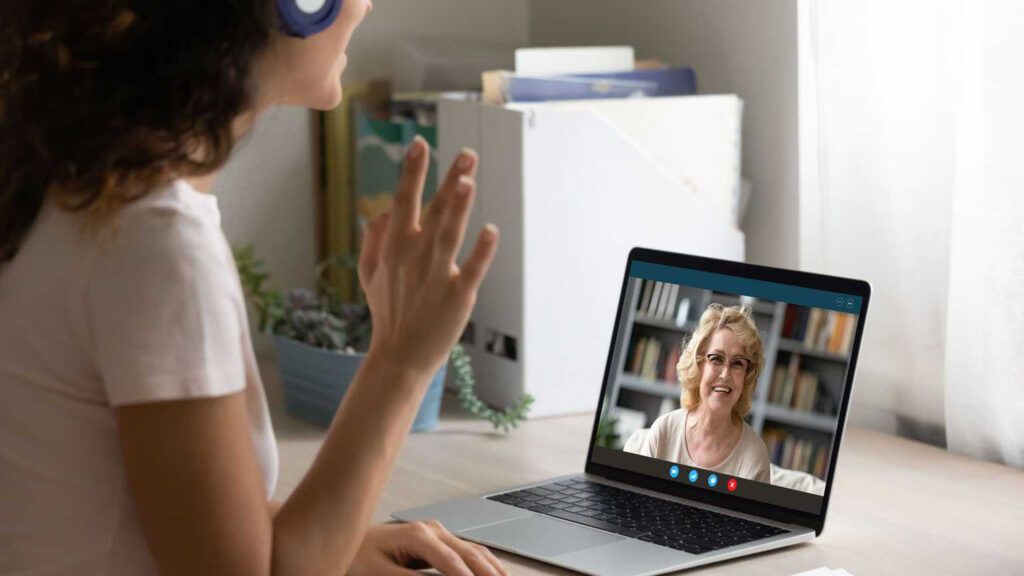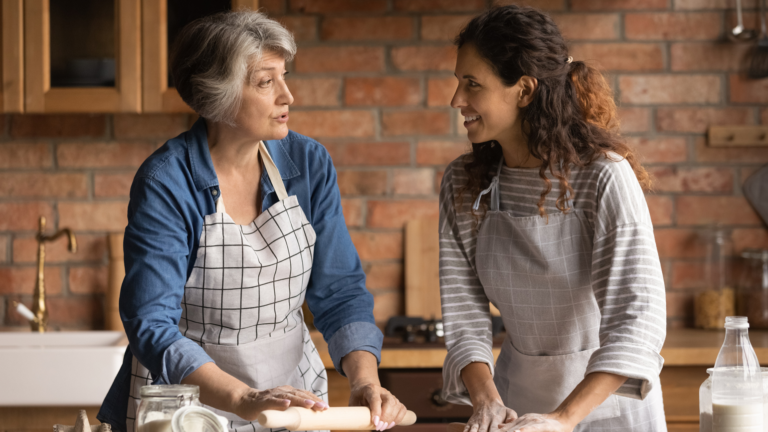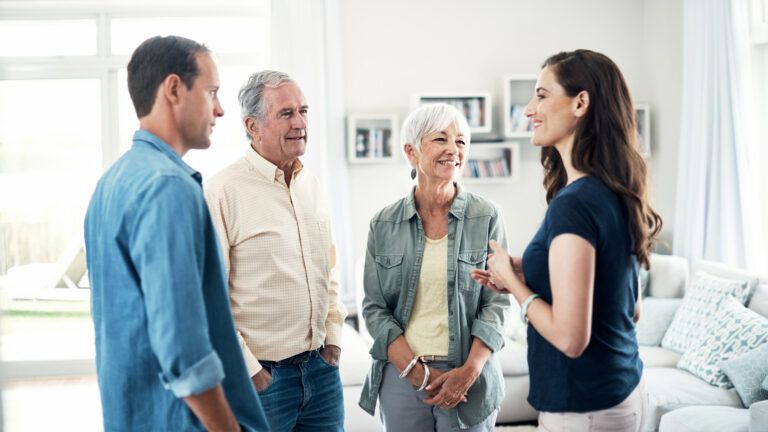Ashlee Cordell is a Research Assistant with the Center for Research and Education at Benjamin Rose Institute on Aging
It has been an on-going challenge to maintain meaningful connections with older loved ones due to Covid-19 restrictions. As the situation changes, follow recommendations from the Centers for Disease Control and Prevention (CDC). When social distancing and other health and safety guidelines are recommended, it can be especially hard to stay in close touch with family members who are in long-term care facilities or other communities where visiting in-person is very limited or not allowed. But there are still good methods of keeping in contact, even when it can’t be in person.
It’s crucial that you come up with constructive ways to communicate with your loved one. Recent studies continue to show that older adults are at particular risk for social isolation and loneliness. This, in turn, places them at an increased risk for negative mental and physical health outcomes such as anxiety, depression, poor quality of sleep, and physical inactivity.
The initial consideration is to choose a method of connecting that works well for your loved one. He or she may not be very facile with technology, for instance. Other possible issues may be poor hearing or eyesight, or difficulties with speaking or mobility. If any of these factor in, there are options that should fit well with your loved one’s specific needs.
The following tips can help you to communicate constructively from a distance:
- Be Prepared. Make sure to schedule a date and time that works for you both. When you do connect, keep your loved ones’ daily challenges in mind. Your time together can be more constructive and enjoyable when you come prepared with accessible activities, like indulging in one of your loved one’s hobbies.
- Minimize Distractions. Keeping interruptions at bay will allow you to maintain focus. It’s good to turn off the radio or TV, stay out of proximity of other people and plant yourself in a place that is comfortable and allows you to see and be seen.
- Listen and Share. Ask your loved one how he or she is doing, and what has been going on. Really listen to the answers. Don’t forget to share news about yourself as well. Provide multiple avenues for engagement: discuss what you’ve both been doing that day, play music, go through photos, etc.
- Take Advantage of the Camera. Conversations can be static when people just sit in one place and talk. You can have a more dynamic experience by including some simple movement and gestures.
- Explore Tech-Friendly Options. If your loved one is less tech savvy or doesn’t have help to navigate the technology, consider using a simpler device like the GrandPad. This tablet is designed with older adults in mind. A number of video conferencing platforms, like Zoom and Google Meet, also have accessibility options for those with special vision or hearing needs.
If new technology is not comfortable for you and your loved one, pour your thoughts and feelings into a simple phone call or snail mail letter. It might be old-fashioned, but these forms of communication remain valuable and worthwhile and can do much to form meaningful connection. The ultimate key to communication is being present. What matters is not so much how you communicate or what you and your loved one do during your meet-ups. It is more about truly showing up, heart and soul.
For additional resources on how to start conversation, visit HowRightNow, an initiative supported and funded by the CDC Foundation to help relieve stress and promote resilience during the Covid-19 pandemic. If you’re interested in having conversations with other older adults who may be isolated during this time, consider looking into volunteer opportunities in your community. Benjamin Rose Institute on Aging offers a variety of volunteer opportunities including wellness calls, delivery of groceries or other essentials and assistance with home-delivery of meals.





